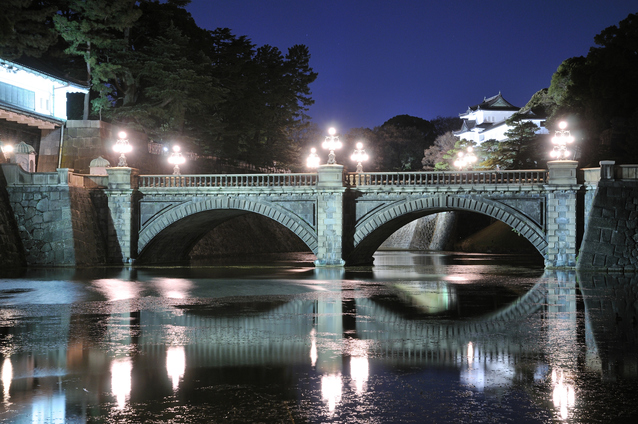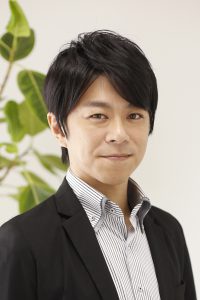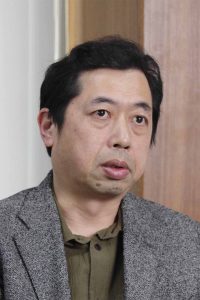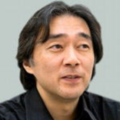Can “Stable Imperial Succession” Be Realized?

In May 2019, the Imperial succession took place and the era name was changed to Reiwa. Currently, there is growing interest in the problems “inside the Imperial Palace moat,” such as the stable Imperial succession and the state of the Imperial Family.
It has been five years since the Imperial succession took place in May 2019, and the era name was changed to Reiwa. Discussions about the Emperor and the Imperial Family have attracted attention, and the ruling and opposition parties began talks in May 2024 to consider how to ensure a stable Imperial succession and the number of Imperial Family members. Two leading scholars of the Emperor and the Imperial Family discussed the issue.
The reappearance of the bansei ikkei (Unbroken Imperial line) ideology
Hara Takeshi: I was stunned, or rather shocked, when I read the “Opinions on the State of Stable Imperial Succession” published by the Panel on Ensuring a Stable Imperial Succession of the Liberal Democratic Party (LDP) in April 2024, but it states in all seriousness that “Since Emperor Jimmu (the first Emperor, 711 [721?]–585 BCE), for 126 generations up to His Majesty the Emperor, the imperial throne has been passed down in the male line without a single exception.”
Kawanishi Hideya: In other words, the LDP believes in the bansei ikkei (Unbroken Imperial line) ideology?
Hara: Yes. The term “bansei ikkei” was first used by Iwakura Tomomi (1825–83) in his “Proposal for the Restoration of Imperial Rule” in 1867, where he pointed out that “The Imperial Household has maintained an unbroken imperial line throughout the ages. Rituals and military actions are all decreed by the Imperial Court.” It was an ideology created to strengthen the government, but no scholars believe in the existence of Emperor Jimmu anymore, and even textbooks no longer refer to the “Mausoleum of Emperor Nintoku”[1] as they once did. Also, just as there have been ten generations (eight individuals) of female emperors in history, it was only after the Meiji period (1868–1912) that the succession to the imperial throne was limited to male descendants of the male line. The “Unbroken Imperial line” was established in the former Imperial Household Law, drafted by Ito Hirobumi (1841–1909) and others, and listed in Article 1 of the Constitution of the Empire of Japan (Meiji Constitution), but it collapsed once after Japan’s defeat in World War II. However, the postwar Imperial House Law continued to provide for the life-long reign of the Emperor and the imperial succession by male descendants of the male line, and the abdication of the Emperor in 2019 was dealt with by a one-time special law (the Law for Special Exception of the Imperial House Law concerning Abdication, etc. of Emperor), and the Imperial House Law was not changed. In other words, the “Unbroken Imperial line” had existed as an unchanging ideology among the conservatives throughout the period before and after World War II, and this was revealed once again.
Kawanishi: Personally, I believe that the continuation of the Emperor system is necessary for national unity, but I was still surprised by the LDP’s “Opinions.” In any case, I felt the desperation of the conservatives to hold on to something, which I think reflects the lack of confidence of the Japanese people today.
Hara: In opinion polls, more than 70% of the people support a female or matrilineal emperor, and in some polls the support for a female emperor alone is as high as 90%. In such a situation, the biggest mystery surrounding the emperor system is that the LDP and the conservatives cling to the ideology of the Meiji period even though they are turning their backs on public opinion. There are several possible reasons, but as Professor Kawanishi points out, Japan’s national power has declined to the point that it has been overtaken not only by China but also by Germany, and it is only a matter of time before it is overtaken by India, and the declining birthrate is not stopping. As the former second largest economy in the world sinks, they (the LDP and conservatives) try to emphasize the “pride” that Japan has that other countries don’t, and they end up pushing the glorious fiction of a dynasty passed down through a single lineage to the fore. In particular, the sense of superiority (of being of a single lineage) over China, where dynasties had been changed by revolutions, emerged in the late Edo period (1603–1867), as will be discussed later, and continued into the Meiji period and beyond.
Kawanishi: I think it is true that they have nothing else to be proud of, so they put forward the Unbroken Imperial line. For conservatives like the LDP, the existence of the Emperor system is not based on the Constitution of Japan. Article 1 of the Constitution states that the position of the Emperor as a symbol “deriving his position from the will of the people with whom resides sovereign power,” and even though the majority of the people are in favor of a female or matrilineal Emperor, they base its existence on a fiction that they consider to be tradition.
Mencius (c. 371–c. 289 BCE) justified the change of dynasties with the “Yixing Revolution” idea, which held that the Chinese emperor was the Son of Heaven, appointed by the mandate of Heaven, and that if Heaven judged that the virtue of the Son of Heaven had been lost, it would mobilize its subjects to replace the emperor. In Japan, the idea that there had been no change of dynasty allowed the country to maintain a sense of superiority over the great power of China.
Non-political dynasties
Hara: I think one of the sources of the “Unbroken Imperial line” ideology is Motoori Norinaga (1730–1801) from the late Edo period. Norinaga declared in his Naobinomitama (1771, Naobinomitama means the divine spirit that ensures the alignment of human actions with the right path) that the Japanese did not have the baseness to usurp power out of ambition like the Chinese, and so he loudly proclaimed from Amaterasu Omikami to his grandson Ninigi-no-Mikoto, and further, that the same bloodline had been continued from Emperor Jimmu.
Kawanishi: So even though the country is small, its spirituality is higher than China’s, right?
Hara: Those who absolutely oppose the matrilineal emperor do so because they (LDP and conservatives) see it as a dynastic change, a revolution. That would no longer be the Japan they believe in, so they would conclude that if they accept it, they don’t need the Emperor system at all.
Kawanishi: Japan has been heavily influenced by China since ancient times and has a history of imitating China in its writing, currency, and political system, but they believe that the consistency of the dynasty is one thing they cannot compromise on.
Kawanishi: It is clear that Japan has been heavily influenced by China.
Hara: Daigokuden Hall was also built in Heian-kyo (present-day Kyoto), where Emperor Kanmu (737–806) moved his capital, but it gradually fell into disuse and was never rebuilt after being burned down in the Angen no taika (the Great Angen Fire) in 1177. Japan no longer needed a large political space to justify its ideology, as was the case in China.
Kawanishi: So there was no dynastic change in Japan, right?
Hara: At least it was recognized as different from the Chinese monarchy, and the Emperor system became a non-ideological Confucian-like system until it was revived with the restoration of imperial rule at the end of the Edo period. There were rituals such as the sokui kanjo (Buddhist ritual of accession ordination), but the period in which the Emperor system was linked to ideology was not very long in history.
Kawanishi: On the other side of the coin, it means that there was a long period when ideology was not necessary. In a video message in 2016, the current Emperor Emeritus said that the Emperor has “no powers related to government” and that he has been looking for a suitable form for “the symbol of [the State and] the unity of the people.” I think this is, in a sense, a correct interpretation of history. I think this is very close to the Emperor system that is supported by many citizens, but it is very far from the proposals of the LDP and others, and it clearly shows the gap between them and the people.
I think their (LDP and conservatives) lack of confidence is also a sense of crisis about the collapse of masculinity. Male descendants are indeed symbols of masculinity, and the image of the “Emperor in Military Uniform” from the Meiji period to the Showa period functioned as a symbol of a macho Empire of Japan. After losing the Asia-Pacific War, the emperor was no longer a symbol of masculinity, but after economic growth, I think a strong economy became a symbol of masculinity.
However, today’s Japanese society is not doing well economically and its status in the international community is declining. Masculinity is being denied and collapsing, and men who want to be macho are losing confidence. So conservatives want the Emperor system to be maintained by the male descendants of the male line, because if that collapses, they will lose a sense of male identity that they can rely on.
The shadow of patriarchy
Hara: The more we cling to masculinity, a relic of the Japanese empire, the more we will diverge from public opinion and the world. In the 2024 edition of the Gender Gap Index Ranking 2024 published by the World Economic Forum, Japan ranks 118th out of 146 countries, the lowest level among OECD member countries, and far behind South Korea (94th) and China (106th). I believe that the reason why Keidanren (Japan Business Federation) recently called on the government on June 10, 2024 to quickly realize optional separate surnames for married couples is because there is a sense of impatience in the business community as well.
Kawanishi: It is impossible to separate the issues inherent in the patriarchal social structure from the issue of the Emperor system’s insistence on male-line male descendants.
Hara: I also believe that they are the same at their roots.
Kawanishi: The “Unbroken Imperial line” ideology, which was established during the Meiji period, is based on patriarchy, and that is why it holds such significance.
Hara: The reason why discussions about the Emperor System are so tentative is that it is clear that the current Emperor System is not unrelated to Japan’s low gender gap index, but no one points this out. If they did, the criticism of discrimination against women would be directed at the Imperial Family. The reason why not only the LDP but also the opposition parties have only superficially discussed the imperial succession and have not been able to reach a consensus within their parties is probably because they are obsessed with the idea of an imperial succession based on the male line. In this sense, only the Japanese Communist Party (JCP), which clearly states that a female or matrilineal emperor should be recognized, is close to public opinion.
Kawanishi: That’s right. A curious situation has developed where the JCP, despite reflecting public opinion the most, is putting the most effort into prolonging the Emperor system. This is because the current JCP does not oppose the continuation of the Emperor system.
Hara: Simply put, the JCP’s position is that ideology is not necessary and it’s fine as long as it continues, which is in line with the reality of the Emperor system, which has long been a time when it did not cling to ideology. So I wonder to what extent those who cling to the “Unbroken Imperial line” are aware of its dangers.
Kawanishi: No, I don’t think they are. They think, as long as they maintain the status of male line male descendants during their lifetime, the next generation will take care of it.
The LDP’s “Opinion” is that female members of the Imperial Family retain their status as Imperial Family members even after marriage, and that male-line male descendants of former Imperial Families are adopted into the Imperial Family. However, in the case of the former, for example, her husband is not a member of the Imperial Family, so he would be able to run for election. I have serious doubts as to whether this proposal has been properly formulated after careful consideration of the various issues involved.
Women behind the veil
Hara: But I don’t think it’s so simple to say that recognizing a female or matrilineal emperor will bring us closer to gender equality.
Kawanishi: This is a difficult point. That alone will not resolve the contradictions inherent in the Emperor system, and even if female or matrilineal emperors are recognized, imperial succession will not be possible unless women in the imperial family choose to “give birth.” As you say, there are many problems to be solved, including the debate over whether to allow a class system that is in direct conflict with the basic human rights of the Constitution. Still, I think it would be good to recognize the female or matrilineal emperor in the hope of making some progress.
Hara: It is said that there are various problems “inside the Imperial Palace moat” (referring to the inside of the Imperial Palace, the Imperial Family) that we cannot know about. From what I have heard, there are customs that place a heavy burden on female members of the Imperial Family. It was thought that these would be reformed with the democratization after the war, but they were considered the private domain of the Imperial Family and could not be touched, and instead everything was hidden. If you read books such as Koshitsu no Saishi to Ikite—Naishoten 57-nen no Hibi (Life as a Ritual Attendant for the Imperial Family: 57 Years as a Female Master of the Division of Rituals) by Takaya Asako (1924–2018), who served as a naishoten [Female Master of the Division of Rituals] for many years after the war, you will learn that even today there is an amazing lifestyle full of customs in the Imperial Court, and that only women must avoid the “impurity” of blood. Even the Diet members who discuss the Imperial Family probably know very little about it.
Kawanishi: They probably don’t know.
Hara: I think there are a lot of people who naively think that if we just recognize the female or matrilineal emperor, we will achieve equality [between men and women].
Kawanishi: The Ritual Ceremonies of the Imperial Palace, which were public duties before the war, were pushed from the “public” to the “private” sphere after the war. As a result, it has become an area that we cannot touch at all, and conversely, the male-dominated society of the prewar period is being preserved. Even if the Imperial Household Law were to allow a female or matrilineal emperor, I don’t think the Ritual Ceremonies, which are merely a private domain, would change easily. However, if the highest position, the emperor, were to become a woman, there is a possibility that things would change.
Hara: In the 2016 video message, the Emperor Emeritus referred to the custom of avoiding the “impurity” of death, saying, “The practice in the Imperial Family has been that the death of the Emperor called for events of heavy mourning, continuing every day for two months, followed by funeral events which continue for one year.” “These various events occur simultaneously with events related to the new era, placing a very heavy strain on those involved in the events, in particular, the family left behind. It occurs to me from time to time to wonder whether it is possible to prevent such a situation.” However, there is no mention of another custom related to female members of the Imperial Family, and the fact that Crown Princess Masako was diagnosed with adjustment disorder in 2010 and is still undergoing treatment, and nothing has been said by the Imperial Family. I think it is still taboo in Japan to discuss the Imperial Family in depth, because the more seriously we think about it, the more we are forced to confront the inequality imposed on women. Personally, I was disappointed that the Emperor Emeritus did not touch on this point in the end.
Support for the “Inactive Emperor”
Kawanishi: From the late Showa period (1926–1989) to the early Heisei period (1989–2019), there was a long period of declining public interest in the Emperor system, and the Emperor Emeritus must have felt a strong sense of crisis about this. He felt that if things continued like this, the Emperor system would be forgotten by the public. In other words, he did not want to maintain the Emperor system based on the ideology of the “Unbroken Imperial line,” but rather he wanted to maintain the Emperor system based on “the will of the people” as stated in Article 1 of the Constitution, and his words and actions show that he was looking for a way to do so. When disaster struck, he immediately visited the affected area and went to former battlefields at home and abroad to offer prayers in order to create an emperor who was close to the people. Therefore, he did not choose to reduce his official duties just because he was getting older, but instead wanted to hand them over to his young and healthy son. This is a constraint or even a curse on the current emperor.
Hara: In his video message, the Emperor said that the first and foremost duty of the Emperor is to “pray for peace and happiness of all the people” and that “[in some cases it is essential to] stand by the people, listen to their voices, and be close to them in their thoughts.” And he must have been proud to “carry out my duties as the symbol of the State with my whole being.”
However, the Emperor and Empress of the Reiwa era do not necessarily follow the “Heisei style” (the Emperor Emeritus and Empress Emerita style). In May 2024, the family visited Goryo Bokujo (Imperial Stock Farm) in Tochigi Prefecture, and many photos were posted on the Imperial Household Agency’s Instagram account. Riding bicycles around the grounds, nursing newborn calves and digging bamboo shoots are quite different from the symbolic duties defined by the Emperor of Heisei.
Kawanishi: It is a message that shows they are a private, ordinary family.
Hara: The stoicism of the “Heisei style” is hardly noticeable in the “Reiwa style.” This is reminiscent of the contrast between Emperor Meiji (1852–1912), who never visited the Imperial Villas, and Emperor Taisho (1879–1926), who visited the Imperial Villas and then did not return for a while, instead spending his time on a yacht or on horseback.
Kawanishi: The Emperor Emeritus and Empress Emerita visited the disaster areas one month after the large pyroclastic flow on Mt. Unzen Fugendake occurred in 1991, two weeks after the Great Hanshin-Awaji Earthquake in 1995, and sent a video message five days after the Great East Japan Earthquake in 2011, visiting evacuation centers and disaster areas for seven consecutive weeks starting two weeks after the earthquake. In contrast, Emperor and Empress Reiwa visited the disaster areas of the Noto Peninsula Earthquake in 2024 almost three months later, which was quite late.
Hara: Now, however, the actions of the Emperor and Empress of Heisei are being criticized on social media, with some praising the Emperor and Empress of Reiwa for not moving too quickly and for “having the decency not to interfere with relief and reconstruction efforts.” At the same time, there is criticism of Prince Akishino’s family, and the actions of Komuro Mako (the eldest daughter of Prince Akishino) and her husband Kei are treated as gossip. Support for the current Emperor and Empress is not based on ideology, but rather on a kind of aversion to the attitude of rigorously questioning what a symbol is (as the Emperor and Empress of Heisei did).
Kawanishi: I think Emperor Heisei had a strong sense of crisis about the people’s drift away from the Imperial Family and acted out of concern for how he appeared to the people, but I think the current Emperor is very conscious of the people’s eyes in a different sense. This seems to have been a traumatic experience for him as Crown Prince, because during his time as Crown Prince, he made a statement to Crown Princess Masako, “It is true that there were developments that denied Princess Masako’s career up to then as well as her personality driven by her career.” This was sensationally reported both at home and abroad, sparking a national debate about the state of the Imperial Family. In the age of social media, it seems that his guiding principle has become not to do anything that might attract criticism. On the other hand, it also seems that he released the aforementioned family photo because he thought it would be acceptable in today’s society.
Why Prince Akishino’s family is being bashed
Hara: While Emperor Meiji acted as a leader of a military state, Emperor Taisho attempted to be someone who valued his private time. However, the “Taisho style” was crushed by Meiji-period elder statesmen like Yamagata Aritomo (1838–1922). Emperor Showa, in contrast, once again took on an image to reinforce the state’s ideology. I said that the Emperor of Reiwa has similarities with Emperor Taisho, but according to the current Imperial Household Law, the imperial line is to be transferred to Prince Akishino’s family. I’m curious to know what Prince Akishino thinks about the Emperor system.
Kawanishi: The Emperor and Empress, who have no ideological aura, seem to be in tune with the public mood, but on the other hand, Crown Prince and Crown Princess Akishino, who have a different atmosphere, seem to be beating them up. I think this is in line with the criticism of the Emperor of Heisei.
Hara: Crown Princess Kiko seems to be following in the footsteps of the Empress Emerita. By learning sign language and serving as president of the Japan Anti-Tuberculosis Association she follows in the footsteps of Empress Emerita and Princess Chichibu (1909–95), and she also seems faithful to the division of roles between the emperor, male imperial family members, and female imperial family members established by the Meiji government.
Kawanishi: I think there is that aspect to it.
Hara: If Prince Akishino becomes Emperor, Crown Princess Kiko becomes Empress, and Prince Hisahito becomes Crown Prince, would Prince Akishino follow the “Heisei style” as Emperor Showa followed the “Meiji style”?
Kawanishi: The question is whether society will allow it. The Showa period before the war was a time when ideology was needed, so we could return to it, but I don’t think today’s society is looking for ideology. Nowadays, everyone is living in a difficult environment, and there is an atmosphere of criticizing successful people. The Empress, who is living in pain, has become like a spokesperson for us, and Kiko, who is doing her official duties well, has become the virtual enemy. This is probably due to the Komuro Mako issue.
Hara: I think Mako’s move to the United States was a de facto defection, but it has hurt the image of the Prince Akishino family. However, I think I can understand Mako’s feelings. If she had remained in Japan, Mako would have eventually become the saishu (the most sacred priestess) of the Ise Grand Shrine (Ise Jingu Shrine), just like Ikeda Atsuko[3] and Kuroda Sayako.[4]
Kawanishi: Even if she marries and is no longer a member of the Imperial Family, she still has such a role to play.
Hara: The weeklies criticized her on a superficial level, but I think Mako’s decision was a very serious one, reflecting the difficulties women face in the imperial court. The gender gap in Japanese society and the Emperor system are closely related issues, but no one has properly pointed this out. During the second Abe administration (2012–2020), some liberal commentators contrasted then-Prime Minister Abe with the Heisei Emperor and praised the Emperor (now Emperor Emeritus) as an “embodiment of democracy,” but this was nothing more than a political use of the Emperor, and they turned a blind eye to the inequality inherent in the Emperor system.
The debate over whether to recognize a female or matrilineal emperor is predicated on the continuation of the Emperor system. However, even if we recognize a female or matrilineal emperor, the Emperor system will not continue to exist unless the female members of the imperial family choose to “give birth.” There is no freedom not to give birth, and sexual diversity such as LGBTQ is not recognized. I believe we have reached a stage where we must have a discussion that goes as far as the existence or abolition of the Emperor System.
The “future” of the Emperor system
Kawanishi: If I follow Professor Hara’s logic to the fullest, it is understandable that such a discussion would arise. However, when I see the sloppy nature of today’s politicians, I feel that the Emperor’s role as a symbol of unity is necessary, separate from ideology. Even with the Tokyo Olympics, the preparations were plagued by problems and scandals, and the COVID-19 pandemic seemed to be the end of the road. When the Grand Steward of the Imperial Household Agency said, “His Majesty (who serves as the Honorary President of the Tokyo 2020 Olympics) is concerned that holding the Olympics may lead to the spread of infection,” the words were somehow put together and the Olympics were held. Regardless of the pros and cons of holding the Olympics, I was keenly aware that the emperor still had the power to unite.
Hara: I can understand the logic that the role of the emperor was important in the stage of modernization as a military nation after the Meiji period, but that should have collapsed with the defeat. And yet the ideology was preserved through the Imperial Household Law. Emperor Showa himself should have thought carefully about the symbolism defined in the Constitution of Japan, but he did not. As a result, I think various contradictions were left unaddressed.
Kawanishi: The current Emperor still has the influence of the Emperor Emeritus and the Empress Emerita, and he acts with that in mind, as well as the feelings of the people, so it is hard to tell what he thinks about the Emperor system and the Imperial Family. Even though the people say they are “in favor of a female or matrilineal emperor,” they are not enthusiastic about it, but rather seem to be more passive in their support, such as “somewhat in favor.”
Hara: However, Japan is now in a situation where it has to internationalize whether it wants to or not, from incoming tourists to immigrant workers, and the Imperial Family also has to establish relationships with foreigners. Even the Emperor and Empress of the Heisei period often went on gyokokei (the Emperor’s and Empress’s visit) to strengthen their relationship with the people, and from now on there will be more opportunities to visit areas with large numbers of foreigners, and they will be exposed to various diversities. Perhaps something that can be called “Reiwa style” will emerge there. It is not easy to resolve gender issues within the Emperor system, and even if we recognize the female or matrilineal emperor, contradictions will remain, but I would like to pay attention to how much we can change.
Moderated by Yanase Toru
Translated from “Taidan: ‘Reiwa-ryu’ no Hikari to Kage—‘Anteitekina koi-keisho’ wa jitsugen dekiruka (Discussion: The Light and Dark Side of the ‘Reiwa Style’—Can “Stable Imperial Succession” Be Realized?),” Chuokoron, August 2024, pp. 128–137. (Courtesy of Chuo Koron Shinsha) [September 2024]
[1] It was said to be the tomb of Emperor Nintoku (257?–399?), the 16th Emperor of Japan, but it is unknown and is now called The Daisenryo Kofun. Incidentally, the group of ancient tombs including the Daisenryo Tomb was registered as a World Heritage Site in 2019 as the Mozu-Furuichi Kofun Group: Mounded Tombs of Ancient Japan.
[2] In the Chinese Taiji Hall, the Son of Heaven sat on the throne with his back to the north and faced his subjects to the south. In other words, he ruled the country, so the Japanese emperor also faced south in Daigokuden Hall.
[3] Born in 1931 as the fourth daughter [fourth child] of Emperor Showa. In 1952, she married and left the Imperial Family. She served as the most sacred priestess (saishu) of the Ise Grand Shrine and president of the Association of Shinto Shrines.
[4] Born in 1969 as the first daughter [third child] of Emperor Emeritus Akihito and Empress Emerita Michiko. Married and left the Imperial Family in 2005. Served as temporary saishu of the Ise Grand Shrine from April 2012 to October 2013.
Keywords
- Kawanishi Hideya
- Nagoya University
- Hara Takeshi
- Meiji Gakuin University
- Yanase Toru
- Imperial succession
- Imperial Family
- Imperial Household
- Imperial House Law
- Emperor
- bansei-Ikkei
- Unbroken Imperial line
- unbroken line of emperors
- male line
- LDP
- conservatives
- female emperor
- matrilineal emperor
- Daiichiji Daigokuden Hall
- masculinity
- patriarchy
- gender gap
- Takaya Asako
- ritual ceremonies
- Crown Princess Masako
- Komuro Mako
- Prince Akishino
- Crown Princess Kiko
 KAWANISHI Hideya
KAWANISHI Hideya HARA Takeshi
HARA Takeshi



